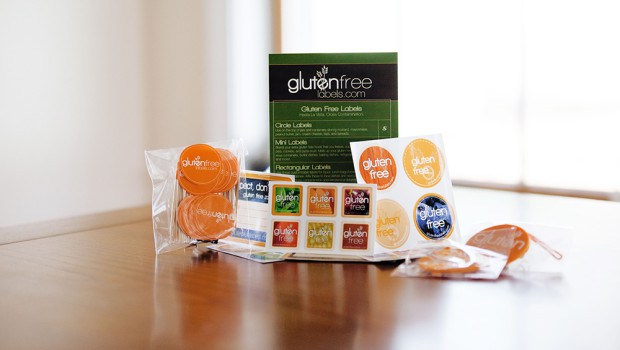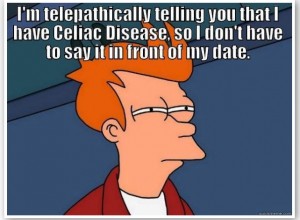You have just found out that you have Celiac disease and probably are feeling quite overwhelmed at exactly what that means and what to do next. You may find yourself somewhere between feeling quite ecstatic that you have finally figured out what the heck was wrong with you and quite miserable because you have to give up so many of your favorite foods. From here on out convenience eating is a thing of the past, preparation is your new best friend.
So, first things first:
- Have an allergy & vitamin deficiency test done
- Find out as much as you can about Celiac disease
- Talk to family members about getting tested
- Learn what gluten free means and the foods that are safe to eat
- Get used to reading EVERY label on anything you buy
- Expel the gluten from kitchen and household
- Research safe restaurants and ask questions
- Be prepared and always have snacks on hand when out of the house
- Don’t cheat
- Heal your body
Allergy Test & Vitamin Deficiency Tests
More times than not, if gluten is a problem, there might be other foods that are bothersome as well, like dairy, soy or eggs.
Lactose Intolerance can be an issue according to the Celiac Support Association, “Lactose Intolerance is a condition that is common in those with celiac disease. Lactase is produced in the tips of the villi. If lactase is not present to facilitate digestion of the milk sugar, lactose, the body reacts with symptoms such as bloating, gas and/or diarrhea. A simple test for lactose intolerance can be administered during a routine physician visit.”
Checking for allergies is essential because you do not want to overlook any possibilities that could keep you from feeling better.
You may think that all you have to do is start eating gluten free and all your health problems will start to dissipate, more times than not that isn’t true. There generally will be several factors creating your health issues, so getting to the root of the problem is essential.
Have your doctor or a lab (can be less expensive if not insured) run a vitamin deficiency test. If your gut has been compromised then there is a good chance you have not been absorbing vitamins. This can cause a slew of problems such as anemia, headaches, fatigue, irritability, digestive problems, hair loss, depression, suppressed immune system and much more. It is essential after diagnosis to start healing the body as quickly as possible.
Celiac Disease Research
It is so important to do your homework and find out as much as you can about your disease. Use Google, social media, join chat groups, find a local support group or start your own. Think about subscribing to a gluten free magazine like Gluten Free & More for great recipes, health tips and shared stories from individuals going through exactly what you are.
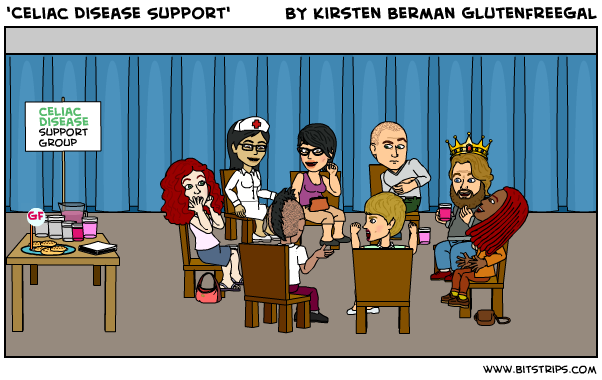
Diagnosis for Celiac disease, on average, takes about 6-10 years, according to Celiac Central, and can be accompanied by many other ailments or diseases caused by continued misdiagnosis or lack there of. Undiagnosed Celiac disease can cause major damage and affect any part of the body, not just the intestine. 300+ autoimmune diseases, cancer, diabetes, thyroid & mental issues, such as depression, can all be attributed to Celiac disease.
It is important to talk to family members because once a family member has been diagnosed immediate members like parents, siblings or children have a 1 in 22 chance of also having Celiac and should be tested. Secondary members like cousins, aunts or uncles have a 1 in 39 chance of having Celiac.
Learn What Gluten Free Food Means
It is important to research about what living a strictly gluten free lifestyle means. There is hidden wheat behind every corner and in items you might assume are gluten free like: candy, lip balm, supplements and imitation meat like fake crab meat sold in stores and sometimes used in sushi. Research what flours and ingredients are safe to make your grocery shopping experience easier.
Being glutened after you’ve gone gluten free is ten times worse than before you went gluten free. To minimize this chance know what is in your food and always read labels and ask questions.
Reading Labels
These two words are your new best friends and must become second nature. When I was first diagnosed, I made many mistakes eating foods I assumed were gluten free and it wasn’t until after that I read the label or felt sick I realized it was not. My three top food label assumptions were: soy sauce, red licorice and my multi-vitamin. All three had wheat and did not find out until I felt the consequences.
Oats can be a touchy subject and fall somewhere in the middle of affecting some and not affecting others. Some people with celiac or gluten issues can have an immune response because the Avenin contains a “similar amino acid sequence as wheat gluten”. Oats are often cross contaminated with wheat and barley, so looking for items that say, gluten free certified are your best bet or if not certified, researching the safety precautions a specific company is taking is crucial.
There are also some great apps out there for your phone that can you can set and scan the labels to make sure there is no gluten in the ingredient list. I like the app called, Fooducate and have used for the past couple years. You can set all the ingredients you are looking for and it will give you the percentage of possibility and the explanation to go with it.
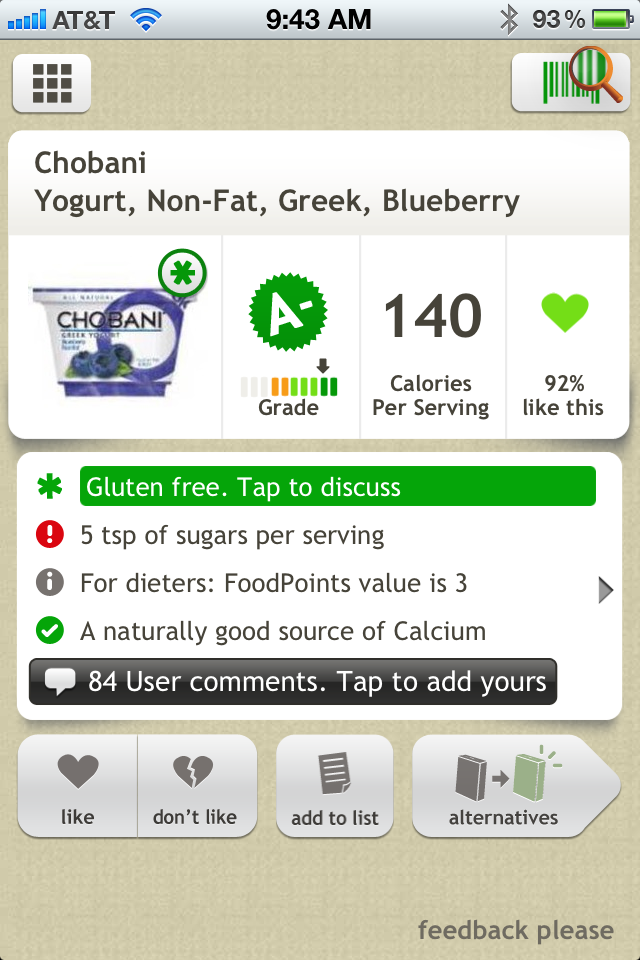
Rid House of Gluten
First things first, sweep your house for gluten and throw it all away. Go through kitchen cabinets, refrigerator, medicine cabinets, bathing items, make-up… there is gluten in more things than you ever imagined. As of right now, gluten does not have to be labeled on medication, but here is a link to find out more about gluten-free drugs.
Understanding Cross Contamination
If sharing a kitchen with a gluten person then you need to take extra precaution with:
– utensils
– toaster
– pots n pans
– shared plates
– cutting board
– counter crumbs
– shared food like: peanut butter and jelly, butter, cream cheese, potato chips, etc…
*Little gluten crumbs left in a shared peanut butter jar or a tub of butter can cause you to be glutened. As can a shared toaster, utensils, cutting board and pots n pans.

*Make sure to thoroughly clean shared items, have your own section of gluten free items, and explain to those around you the necessity & importance of keeping your food area gluten free.
Check out purchasing some gluten free labels for shared kitchen space at home, work and school.
Eating Out
Yep, I am not going to even lie and pretend this one is easy, because not only it is not easy, it can be downright frustrating. Restaurant glutening and cross contamination is a huge problem, especially with items that say ‘GF’. The actual ingredients they use might not have gluten but where it’s prepared, the pans cooked in or the utensils used, may.
Due diligence and call ahead to see what a restaurant’s gluten free options are and how concerned the restaurant is on safety. My first rule of thumb for eating out is, Don’t ever expect the people preparing or serving your food to know more about your disease than you do. It is up to you to know the right questions to ask and to not be embarrassed or afraid to ask them or speak to a manager of the chef.
Be Prepared
These two words will also become your best friends. I cannot tell you how many times I have left the house without any snacks in my purse or car and seriously regretted it after. It is always a good idea to have something on hand, in your desk at work or stored in a pocket of your book bag. I have a gluten free emergency bag that I carry in the trunk of my car for those ‘need to eat’ moments.
Social occasions are definitely a ‘be prepared’ situation, be prepared to bring your own dish. Long gone are the days where you can eat and drink freely. In some cases the host might try to accommodate a gluten free dish for you, as nice as this is, make sure to find out what exactly is in it. Most times though, you are completely on your own for finding something safe to eat. More than half of these times I am in the corner hoarding the vegetable try.
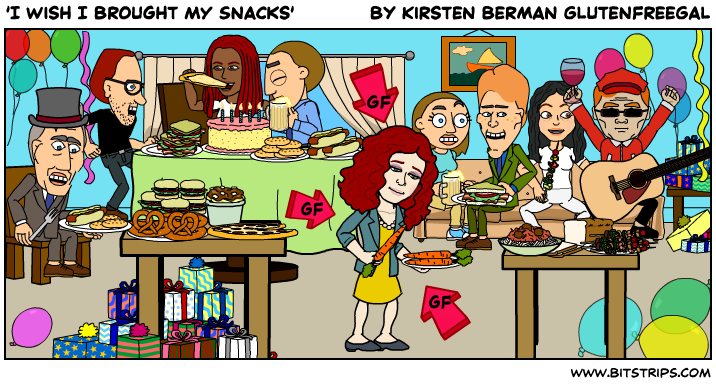
Don’t Cheat
Once you start ridding your body of the evil gluten, cheating here and there is not only worse for your health and may cause more damage, it can also make your symptoms hit you ten times worse. Before I was diagnosed I almost became use to feeling ill most of the time, what choice did I have. But after going gluten free and feeling clean and clear for the first time in years, then being glutened by something I ate, my symptoms were so much more severe and immediate. After my ‘soy sauce’ mistake, I ended up sleeping for a solid two and half days, that was a huge wake up call.
Heal Your Body
After diagnosis, your first inkling might be to rid yourself of all the gluten food and replace it with the gluten free version. Stop and reconsider. Take into account the damage that needs to be repaired in the body first before returning to packaged, processed food. The body probably has been fighting your gluten disability for quite awhile before any symptoms or underlying factors have set in. Which means, your body needs a healthy break and should be replenished with clean, whole foods that you find in the outer isles of your grocery store.
Fresh fruits, vegetables, poultry, lean meats, fish, eggs, quinoa, legumes, and nuts are a good start. The initial months after diagnosis is when to load the body up with the vitamins and minerals it needs to get you feeling like yourself again. This stage is also imperative to replenish your gut with healthy bacteria, clean it out and get it working correctly again. Skipping this step can lead to creating more food allergies or intolerances down the line.
Keep your chin up and don’t feel sorry for yourself for too long, keep in mind that down the line you are going to be a much healthier version of who you are now.
** If you choose to go with a lab for testing instead of a doctor, I use Walk-In Lab. They are quick, reliable and usually less expensive.


